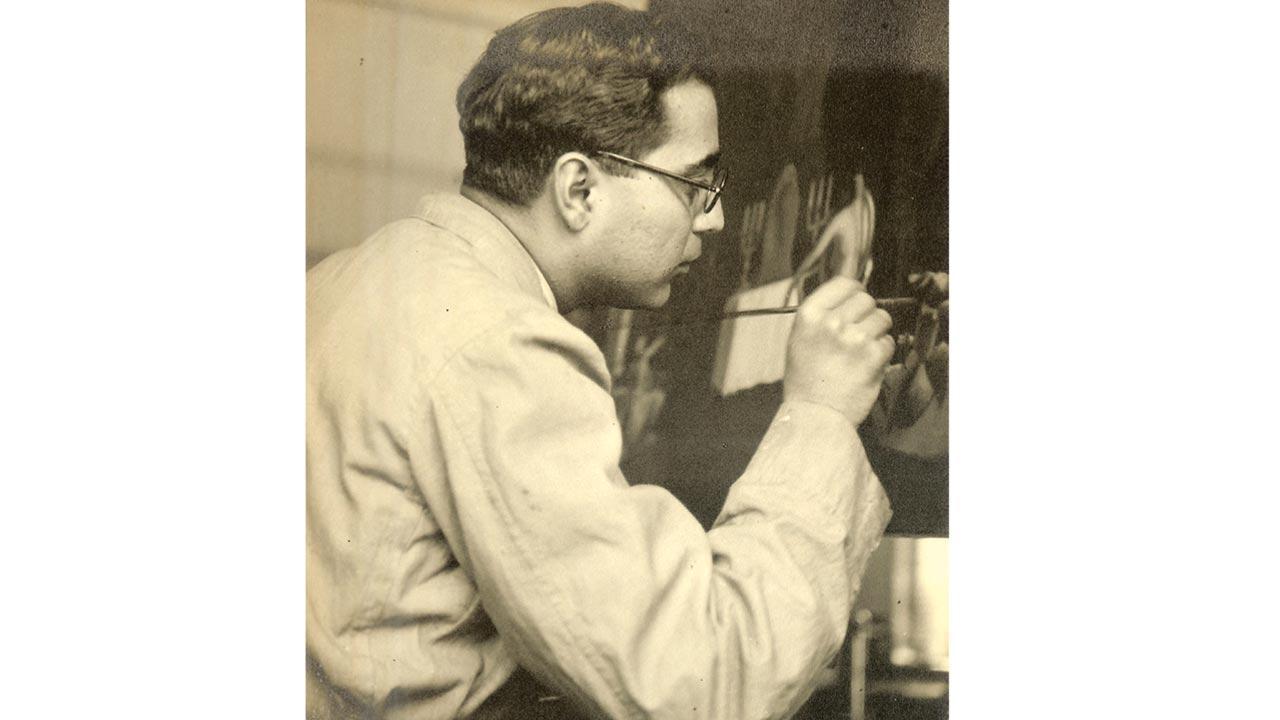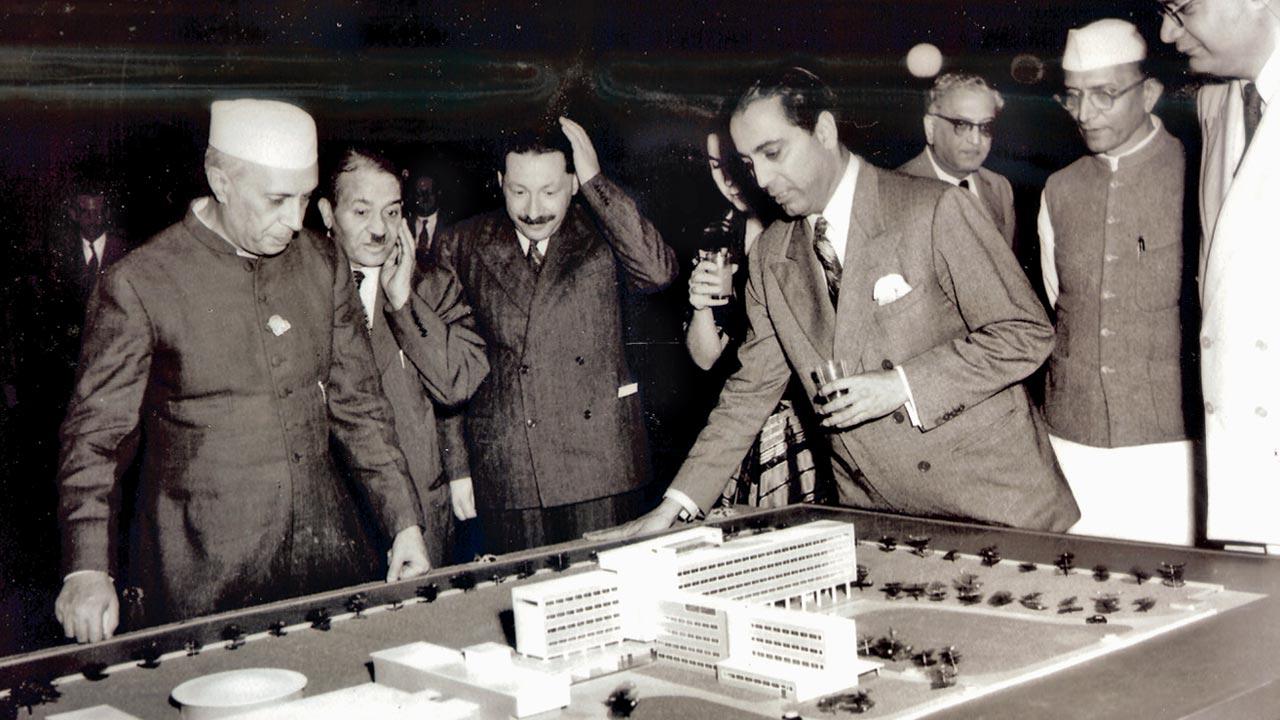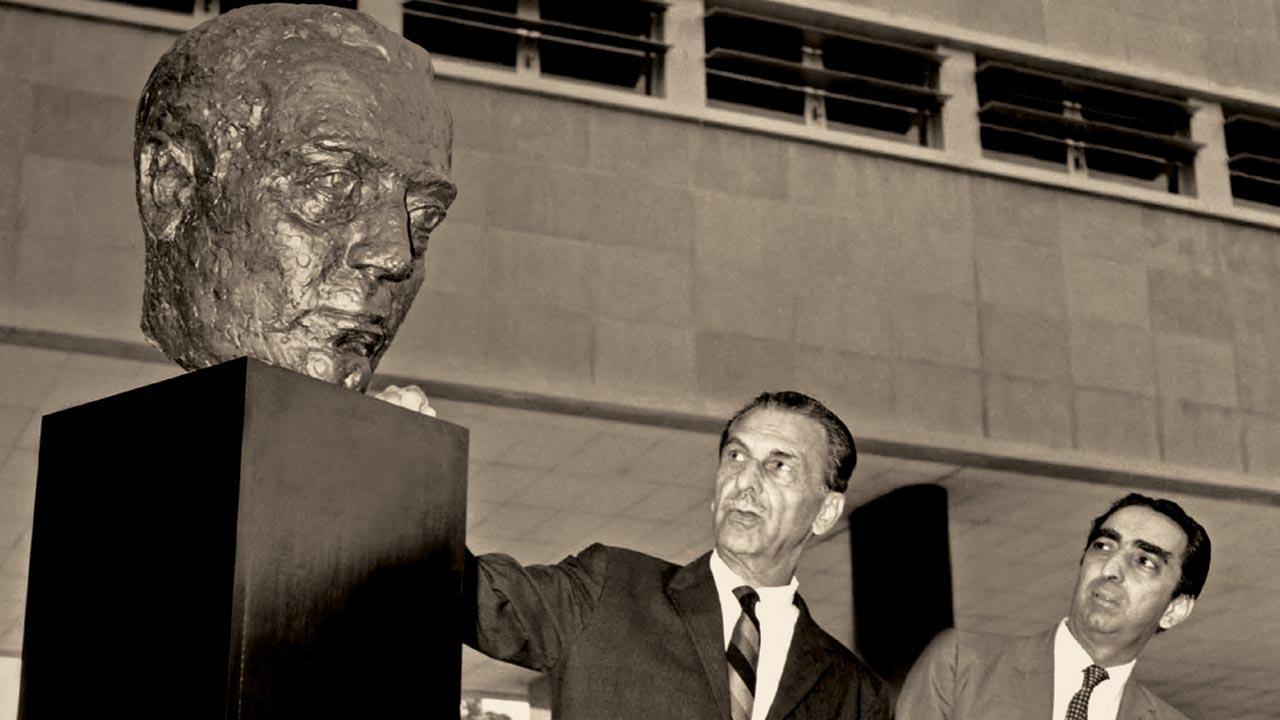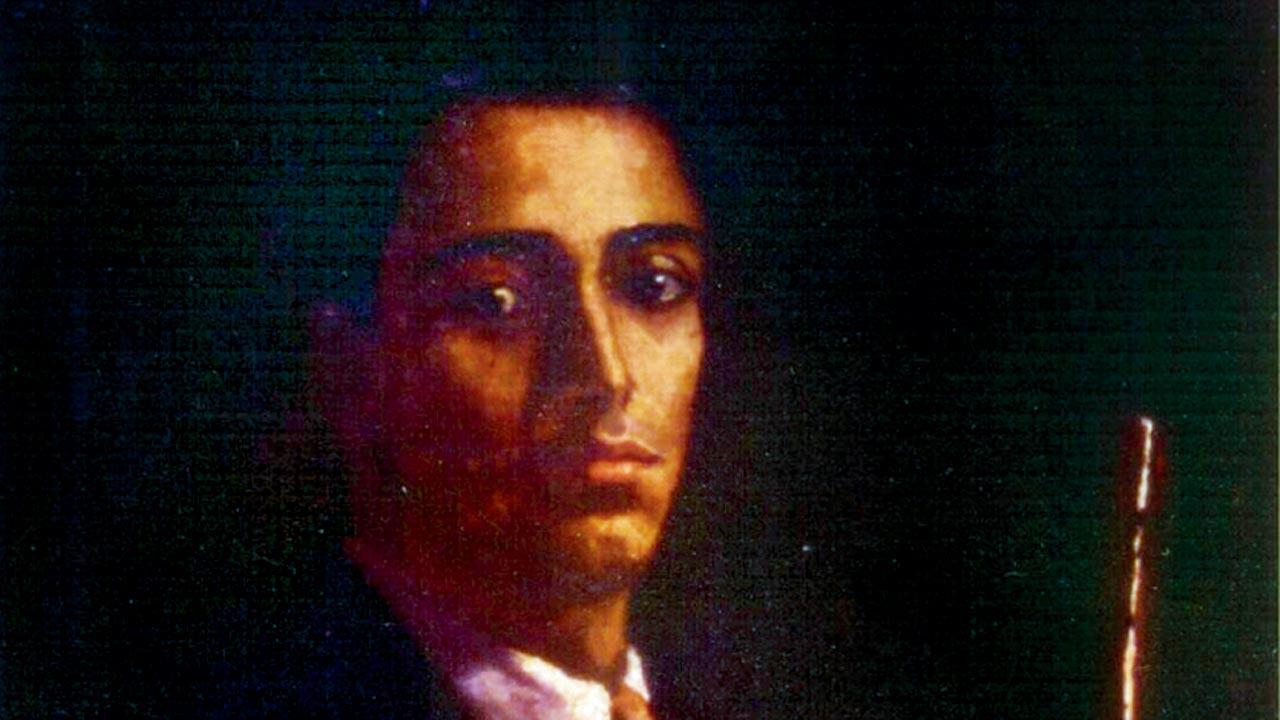A biography of Homi J Bhabha, chief architect of India’s nuclear programme, reveals a mind keen to nurture men of science who were also connoisseurs

Bhabha at work on his painting inspired by the Countess’ aria, Dovo sono i belli momenti from Mozart’s opera The Marriage of Figaro. PIC COURTESY/ Homi J Bhabha: A Life by Bakhtiar K Dadabhoy, Rupa Publications
Homi J Bhabha’s deep interest in the cosmopolitan aesthetics nurtured by the Bombay Progressives resulted in TIFR spending government money to buy paintings and other works of art. With Nehru’s permission, he began spending one per cent of the institute’s annual budget on purchasing works of art.
ADVERTISEMENT
Bhabha started the TIFR collection in the early 1950s, and, within a decade, had amassed the most significant collection of Indian modern art anywhere in the world. Most of the art collection consisted of contemporary pieces by practising artists and included women artists like Pilloo Pochkhanawala, Prabha Agge and Jyoti Shah.
When Sir Maurice Wilkes who visited TIFR in 1964 remarked on the artworks displayed, Bhabha told him that “the government of India was one of those enlightened governments that allowed a small percentage of the total funds spent on new government buildings to be spent on artistic enrichment”. Bhabha said that, unlike many of his colleagues, he took advantage of this provision “up to the hilt”.
 Bhabha shows Nehru a model of the new TIFR buildings as SS Bhatnagar, Morarji Desai and JD Choksi look on. A wall in the entrance hall was 45 ft long and nine feet high, and Bhabha was keen that it carry a Pablo Picasso mural
Bhabha shows Nehru a model of the new TIFR buildings as SS Bhatnagar, Morarji Desai and JD Choksi look on. A wall in the entrance hall was 45 ft long and nine feet high, and Bhabha was keen that it carry a Pablo Picasso mural
The first painting acquired by TIFR was Window by GM Hazarnis in February 1952. The second was Window Light, a water colour by Ara, a purchase that marked the beginning of Ara’s special relationship with the institute, one which continued long after Bhabha passed away in 1966. In the 1950s, Bhabha acquired works by almost all the Progressive artists from Bombay—Souza, Husain, Bakre, Raza, Gade and Gaitonde. The third piece purchased for the collection was a decorative panel by Langhammer in 1952, followed by a landscape in 1955. Langhammer’s portrait of von Leyden titled, The Critic, also found its way into the collection.
Other modern Indian artists, whose works were purchased for TIFR, include Kattingeri Krishna Hebbar, Badri Narayan, Ardeshir Davierwalla, Shiavax Chavda and Laxman Pai. Bhabha also bought the early works of Ganesh Pyne and KG Subramanyan. His patronage and informed criticism of the plastic, pictorial and performing arts assumed an added dimension since he was an accomplished artist himself.
Anand, in his letter that he never posted due to Bhabha’s demise, said that Bhabha’s frequent appearances in a casual non-official manner at the Artist’s Aid Centre confirmed for many of those young talents that in him they would have a discriminating patron who would talk from within the experience of the pictorial situation rather than in the generalised manner of art critics.
 JRD Tata and Jamshed Bhabha with B Vithal’s bust of Homi J Bhabha gifted to TIFR by Tata in 1967, a year after his death
JRD Tata and Jamshed Bhabha with B Vithal’s bust of Homi J Bhabha gifted to TIFR by Tata in 1967, a year after his death
Bhabha’s institutional patronage was driven by his own artistic inclinations, and his desire to refine the aesthetic sensibilities of the scientists at the institute.
His patronage of the American–British sculptor, Sir Jacob Epstein, attracted much criticism from government circles. In 1954, Bhabha purchased one of Epstein’s bronze heads of Einstein15 for what was then considered the extravagant sum of R3,818.72. Six months after Bhabha’s death in January 1966, a letter from Marlborough Fine Arts Limited, London, was discussed at the 50th meeting of the TIFR council. This letter informed the council that a bronze head of Einstein had been sold at Sotheby’s for £2,100 in July 1964. The institute had paid £200 for it in 1954. It is not known what the government thought of the more than tenfold appreciation.
However, Bhabha was hardly going to be affected by such criticism. Apart from his own strong convictions about the importance of aesthetics to science, he also had Nehru firmly by his side. A wall in the entrance hall of the new TIFR building was 45 ft long and nine feet high, and Bhabha wanted to cover it with a mural. In keeping with his desire for excellence, he set in motion an ambitious plan to invite Pablo Picasso to India to paint the mural for the institute. Bhabha was interested in encouraging a “different pedagogy through which the sensibilities of the citizen-scientist could be refined”. Scientists at TIFR were being “envisaged not only as leaders in an expert-led world but also as connoisseurs capable of holding conversations with the world”. It could also be seen as an attempt to bring together the modernity of Indian art into the modern International style building designed by Helmuth Bartsch. Bhabha did not want art, culture and science to be in silos.
In November 1962, he wrote to JD Bernal, the famous crystallographer and biologist, who he had befriended during his stay in England. Bernal had established Birkbeck’s Biomolecular Research Laboratory in two Georgian houses in Torrington Square. Picasso was close to Bernal, and, when he came to England in November 1950 to attend a world peace conference, he made a drawing on the wall of the sitting room of Bernal’s flat, which was just above his laboratory at Birkbeck College. During a dinner party held at Bernal’s home, Picasso, using pencil and crayon, drew a portrait of a man and woman with wings on the wall of Bernal’s sitting room. This was the only mural Picasso ever made in England. When Bernal’s flat was demolished to make way for a new college building, that section of the wall was removed for preservation and is now part of the Wellcome Collection.
 A self-portrait he made at age 17. Picture Courtesy/Homi J Bhabha: A Life; Rupa Publications
A self-portrait he made at age 17. Picture Courtesy/Homi J Bhabha: A Life; Rupa Publications
This original section of the wall called Bernal’s Picasso is currently installed in the Tate Liverpool gallery.
Referring to a previous conversation on the subject in which Bhabha had asked Bernal to sound out Picasso and ascertain his interest in the project, Bhabha wrote to Bernal to ask if he had met with any success. Citing the foreign exchange crunch, he said it would be impossible to pay him anything in foreign exchange, leave aside a price appropriate for Picasso. Aware of his financial limitations, Bhabha offered Picasso first class return airfare, a stay at the Taj and trips to places of historic interest. Bhabha was obviously relying a great deal on Bernal’s friendship with Picasso for an affirmative answer since what he was offering was very modest, and as he admitted, certainly not in Picasso’s league. We do not know if Bernal replied; there is no evidence on record to suggest that he did.
Bhabha, who must have realised that the chances of Picasso responding favourably were slim, had already set the ball rolling for identifying a suitable artist in India. In September 1962, two months before he wrote his letter to Bernal, he had invited several artists from Bombay to attend a meeting to discuss the mural. A telegram was also sent to Narayan Shridhar Bendre in Baroda to attend the same meeting.
In October 1962, the institute invited 12 modern Indian artists to submit preliminary designs for the mural. In what would be termed a ‘call out’ in modern parlance, NR Puthran, the registrar of the institute, invited the artists emphasising that the mural was intended to be a tribute to Indian art, and a stimulus to the aesthetic sensibility of the many young scientists who passed through the building. Puthran’s letter declared TIFR’s intention to survey a wide range of artistic possibilities which were in harmony with the aesthetic concept of the building.
The institute had allotted R15,000 for the finished mural. The preliminary sketch was to be 9ft 8 in. long and 2 ft wide, and each artist was to receive a remuneration of R800 for it. Ara, Bendre, Gaitonde, Satish Gujral, Hebbar, Husain, Padamsee, B Prabha, RD Raval, Raza, Baburao Sadwelkar and GM Solegaonkar were requested to submit entries. In addition, the names of Shanti Dave, Ram Kumar and Jamini Roy formed part of a separate list in case any of those in the first list were not able to participate. An advertisement was published, calling for applications. From the initial list of invited artists, Raza, Padamsee and Gaitonde did not submit entries. Nine artists responded: Ara, Bendre, Gujral, Hebbar, Husain, B Prabha, Badri Narayan, Solegaonkar and Raval.
Excerpted with permission from Homi J Bhabha: A Life by Bakhtiar K Dadabhoy, Rupa Publications
 Subscribe today by clicking the link and stay updated with the latest news!" Click here!
Subscribe today by clicking the link and stay updated with the latest news!" Click here!







